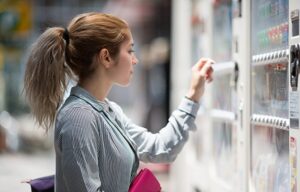Why Front-end and Back-end Development are Equally Important
2 min read
In the complex world of web development, it’s easy to focus on one aspect and overlook the other. Often, people get caught up in the allure of the visual interface (front-end) or become enamoured with the back-end’s complex data operations. However, in reality, both are essential cogs in the wheel that make a website or application function smoothly. Suppose you’re contemplating hiring a Singapore web design agency or simply looking to understand web development better. In that case, it’s crucial to appreciate why front-end and back-end development are equally important. Here’s a breakdown that elucidates their respective roles and why they need to work in harmony.
The Spotlight: Front-end Development
Visual Appeal
The front-end is what your users see and interact with. It encompasses the design, user interface, and user experience. If the front-end is not appealing or user-friendly, you’ll likely struggle to retain visitors. An attractive, intuitive design isn’t just ‘nice to have’; it’s often the first step in converting a visitor into a customer.
Accessibility and User Experience
Modern front-end development focuses not only on design but also on accessibility and user experience (UX). Good UX means a quicker, more intuitive way for users to accomplish what they came to your website for, whether gathering information or completing a purchase.
The Unsung Hero: Back-end Development
Data Management
The back-end of a website handles data management and server-side logic. When a user performs an action on your site, such as making a purchase or filling out a form, the back-end is responsible for storing and managing this data.
Security
One of the back-end’s primary functions is to ensure the security of your website or application. This includes data protection, encryption, and user authentication. A breach in security can be disastrous for your business and reputation.
The Bridge: APIs and Libraries
Application Programming Interfaces (APIs) and libraries often bridge the front-end and the back-end. They allow these two different parts of a web application to communicate effectively, ensuring a seamless user experience.
Why They Must Work Together
Consistency
Both the front-end and the back-end need to be aligned to create a cohesive user experience. Mismatched data or a disconnect between the user interface and server can lead to errors and a poor user experience.
Performance and Scalability
A well-designed front-end and a robust back-end ensure that the website can handle traffic spikes and is scalable. Poor back-end code can slow down or even crash a site, nullifying advantages gained from an excellent front-end design.
Conclusion
While the front-end and the back-end serve different purposes and require different skill sets, they are two sides of the same coin. As any top-tier Singapore web design agency would attest, both are critical in building a functional, secure, and user-friendly website. By understanding their equal importance and ensuring they work cohesively, you set the stage for a website or application that looks great and performs excellently.






